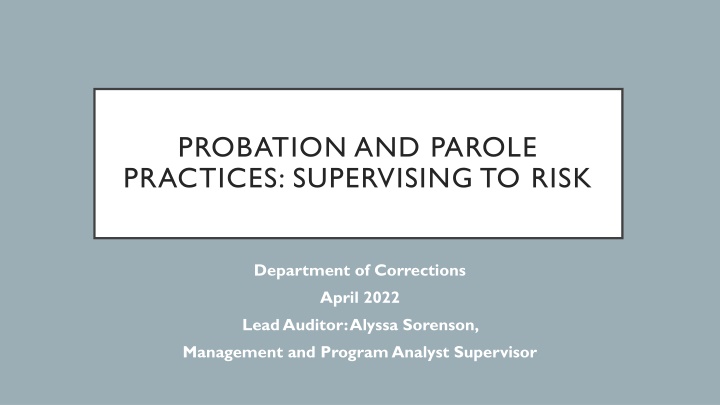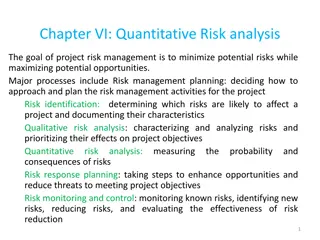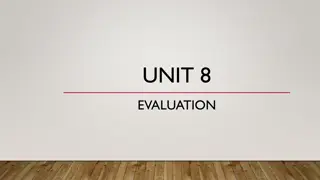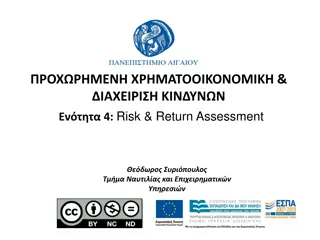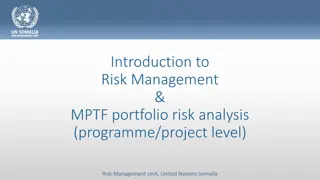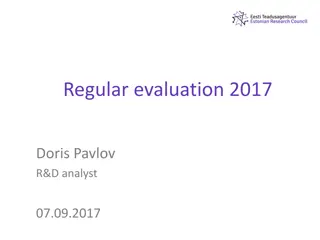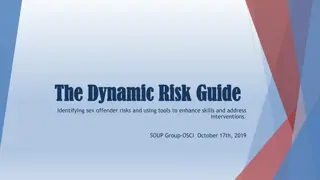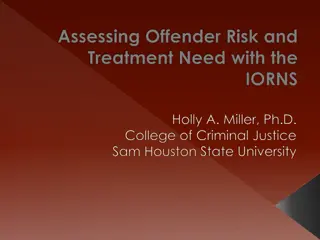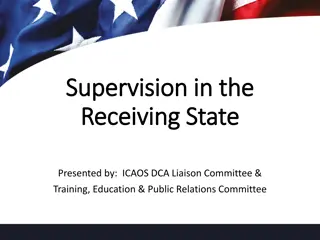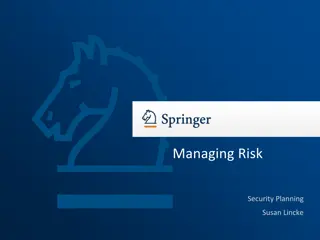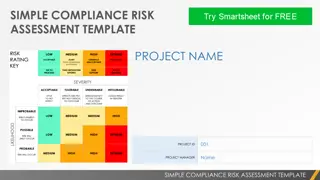Supervising Offenders for Risk: Evaluation Report
Conducted by the Department of Corrections, this report examines the supervision practices of the Probation and Parole Division, focusing on adherence to recidivism risk levels and process efficiency. Recommendations for streamlining risk assessments and reducing caseloads are included.
Download Presentation

Please find below an Image/Link to download the presentation.
The content on the website is provided AS IS for your information and personal use only. It may not be sold, licensed, or shared on other websites without obtaining consent from the author.If you encounter any issues during the download, it is possible that the publisher has removed the file from their server.
You are allowed to download the files provided on this website for personal or commercial use, subject to the condition that they are used lawfully. All files are the property of their respective owners.
The content on the website is provided AS IS for your information and personal use only. It may not be sold, licensed, or shared on other websites without obtaining consent from the author.
E N D
Presentation Transcript
PROBATION AND PAROLE PRACTICES: SUPERVISING TO RISK Department of Corrections April 2022 Lead Auditor: Alyssa Sorenson, Management and Program Analyst Supervisor
Determine if the Probation and Parole Division supervises offenders according to recidivism risk level, as required by state law and best practices. OBJECTIVE
Reviewed PPD policy and procedures Shadowed PPOs at 4 supervising offices Surveyed PPOs & Supervisors Surveyed individuals on Community Supervision METHODOLOGY Reviewed other states programs Analyzed data on completion of risk assessments, use of MIIG, and frequency of offender contacts Completed Usability Study of Offender Management Information System
RISK ASSESSMENTS Difficult to keep up with annual reassessment requirements Completing annual reassessments initial assessments Reducing assessment length and increasing automation can improve completion and use of risk assessments Not completing after life altering events
RECOMMENDATION #1 Simplify the assessment and reassessment process without decreasing effectiveness at predicting recidivism risk. Department response: Concur
Nearly one-third of officers reported they meet contact requirements for half or fewer of offenders on their MINIMUM CONTACT REQUIREMENTS NOT CONSISTENTLY MET caseload.
RECOMMENDATION #2 Improve process requirements and decrease caseloads by: decreasing traditional caseloads below 70 offenders, decreasing the administrative requirements for supervision of some offenders, and decreasing the amount of paper processes and signatures. Department response: Concur
IT IS DIFFICULT FOR OFFICERS TO IDENTIFY CASELOAD CONTACT NEEDS
RECOMMENDATION #3 Develop a method in the caseload health dashboard to easily identify offenders due for a contact according to their risk level and last date of contact. Department response: Concur
EVALUATING PERFORMANCE AND PROGRAM OUTCOMES
RISK ASSESSMENTS COMPLETED, BUT UNDERUTILIZED Case plan and case planning procedure underdeveloped Need for quality assurance to ensure risk assessments being applied Level of prediction of risk assessments in Montana not yet validated or communicated to officers
RECOMMENDATION #4 Strengthen the inclusion of offender risk assessment results in officer case management strategies by: revising current case plan and policy, establishing quality assurance methods, providing annual refresher training, and evaluating and validating risk assessments for Montana s offender population. Department response: Concur
OFFICERS DID NOT FULLY UTILIZE THE MIIG Montana Incentives and Intervention Grid: Tool used to guide responses to offender behavior, using incentives to encourage good behavior and interventions to discourage harmful behavior.
CONCLUSION Statutory changes, including the cap on rates for jail stays, contributed to limiting PPD officers ability to fully utilize the MIIG and supervise to risk.
70% of officers record using more interventions than incentives. INCENTIVES ARE UNDERUSED High risk offenders are less likely to report receiving incentives
RECOMMENDATION #5 Develop processes for ongoing maintenance and evaluation of the MIIG, including making necessary revisions and targeting training efforts. Department response: Concur
DATA INTEGRITY TO MONITOR & EVALUATE SUPERVISION TO RISK
IDENTIFIED DATA INTEGRITY ISSUE User interface design not conducive to data entry Front-end user needs haven t been prioritized Change request process inefficient Identified extensive data errors and inconsistencies Data needs not identified or monitored for quality Need to Consider Long-term Information System Needs
RECOMMENDATION #6 Address data integrity issues by: updating OMIS to ensure data collection needs are met, establishing a process for prioritizing change requests, developing a plan to improve ease of data entry, and evaluating long-term system needs for the department. Department response: Concur
